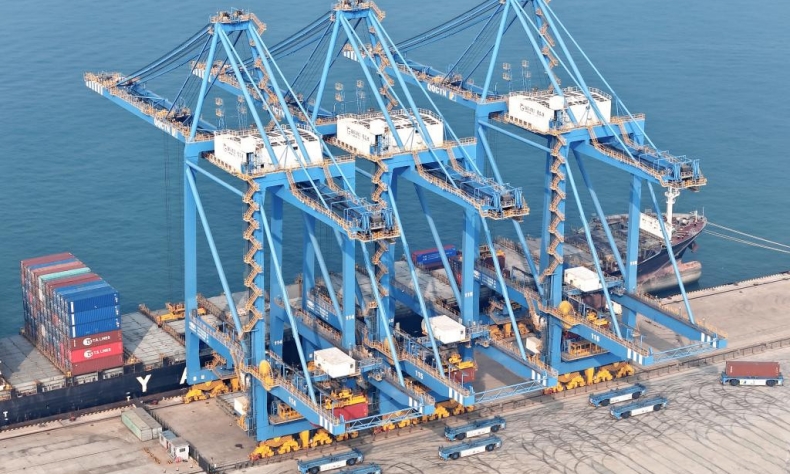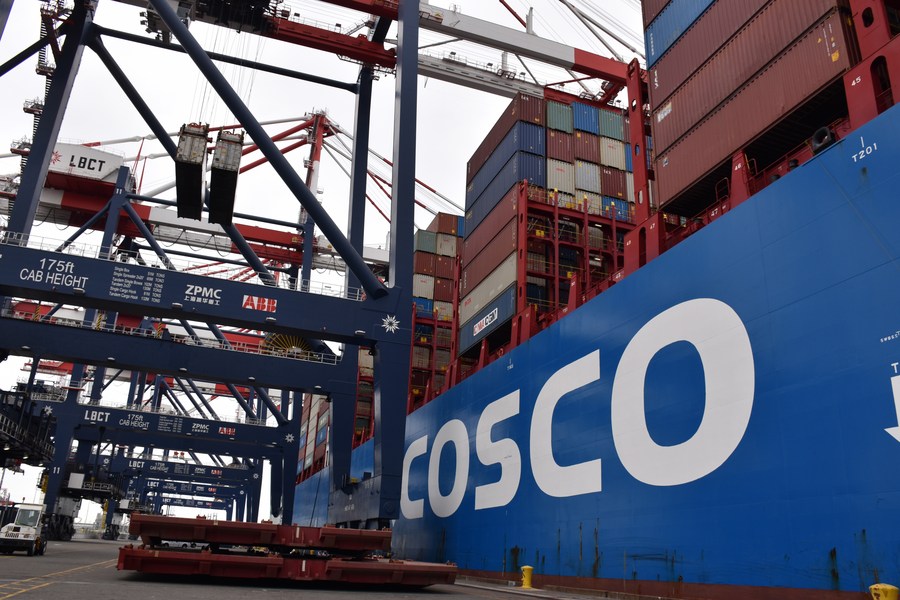Port Cranes, Not Trojan Horses

The peace-loving Chinese may not be the true threat to Western hegemony, what really worries those in the West is that more and more developing countries may follow the path that China has taken, thus changing the global landscape.
The U.S. Government is viewing China-made port cranes as a modern-day Trojan horse clad in a steel exterior.
On February 21, U.S. President Joe Biden signed an executive order authorizing the Department of Homeland Security and the Coast Guard to address the “cybersecurity threat” posed by Chinese cranes within the United States. He also proposed an investment of over $20 billion in the next five years to bolster crane production by PACECO Corp., a U.S.-based subsidiary of Mitsui E&S Co. Ltd. (Japan), to replace their Chinese counterparts. The order and the proposal were made in response to claims that cargo sensors used as part of the cranes’ normal operation could potentially be accessed by China and used to track goods entering and leaving the United States.
Currently, more than 200 cranes, or nearly 80 percent of the total used in ports across the U.S., were made by the world’s largest manufacturer of port cranes and large steel structures Shanghai Zhenhua Port Machinery Co. Ltd. (ZPMC). A single port crane from ZPMC costs approximately $15 million. However, these Chinese-made cranes cost half that of the alternatives, according to the American Association of Port Authorities (AAPA).
A widely known story in China and the United States is that, in 2013, then President Barack Obama delivered a speech at the Port of Miami, encouraging the public to use more products made in America. But as the cranes at the port were made by ZPMC, White House staff covered ZPMC’s Chinese and English logos with American flags to avoid embarrassment. In the end, a strong gust of wind blew away the flags as the speech progressed, revealing the covered Chinese characters.
In November 2021, as President Biden visited the Port of Baltimore and reiterated his commitment to his $1.2-trillion infrastructure bill, the massive crane behind him remained a product of ZPMC.
All 27 ship-to-shore cranes at the Virginia Port were manufactured by ZPMC, and the port has recently placed an order for eight more—four to be delivered late this year, and four set to arrive in August 2025. Port spokesperson Cathie Vick expressed confidence, in an interview with Virginia Business, that the cranes are safe and secure, saying that they underwent a detailed forensic cybersecurity analytics before going online.

Last March, the AAPA issued a public statement to refute the government’s claims, stating that there have been no known security breaches as the result of any cranes at U.S. ports. “Further, modern cranes are very fast and sophisticated but even they can’t track the origin, destination or nature of the cargo,” added the association.
Previously, U.S. politicians made accusations that Chinese telecommunications equipment from Huawei contains backdoors for monitoring American users. Now, port cranes have become the target, and it appears that the scope of the U.S. Government’s decoupling from China is expanding from hi-tech products to infrastructure.
If even heavy machinery has become a source of U.S. suspicion toward China, it’s difficult to predict what new areas of decoupling the U.S. Government is willing to pursue. And given the containment tactics it has already used on China’s microchip and electric vehicle industries, it’s likely it will continue calling on Western allies to suppress China’s development in these new areas too.
“For these American politicians, anything advanced from China is seen as a threat, prompting them to take all measures to suppress it. Only shirts and socks exported from China do not pose a threat to the United States,” said Chinese Foreign Ministry spokesperson Wang Wenbin during a routine press briefing on January 22, in response to a question from a Reuters reporter.
Perhaps many Americans do not agree with the above statements, but from the Chinese perspective, this seems to be the core issue in the competition between China and the United States. Over two decades after the Cold War ended, the mainstream belief in the Western world hasn’t changed yet: Developed countries sit at the top of the pyramid, while developing countries, although they also benefit from this division of labor, struggle to overcome technological barriers and challenge the vested interests of developed countries.
Chinese people have expressed such sentiments before: The profit from exporting 800 million shirts from China can only buy one Airbus A380. However, it was unforeseen that China would consistently achieve technological breakthroughs and pursue an independent development path while ascending to become the world’s second largest economy. The peace-loving Chinese may not be the true threat to Western hegemony, what really worries those in the West is that more and more developing countries may follow the path that China has taken, thus changing the global landscape.
 Facebook
Facebook
 Twitter
Twitter
 Linkedin
Linkedin
 Google +
Google +










